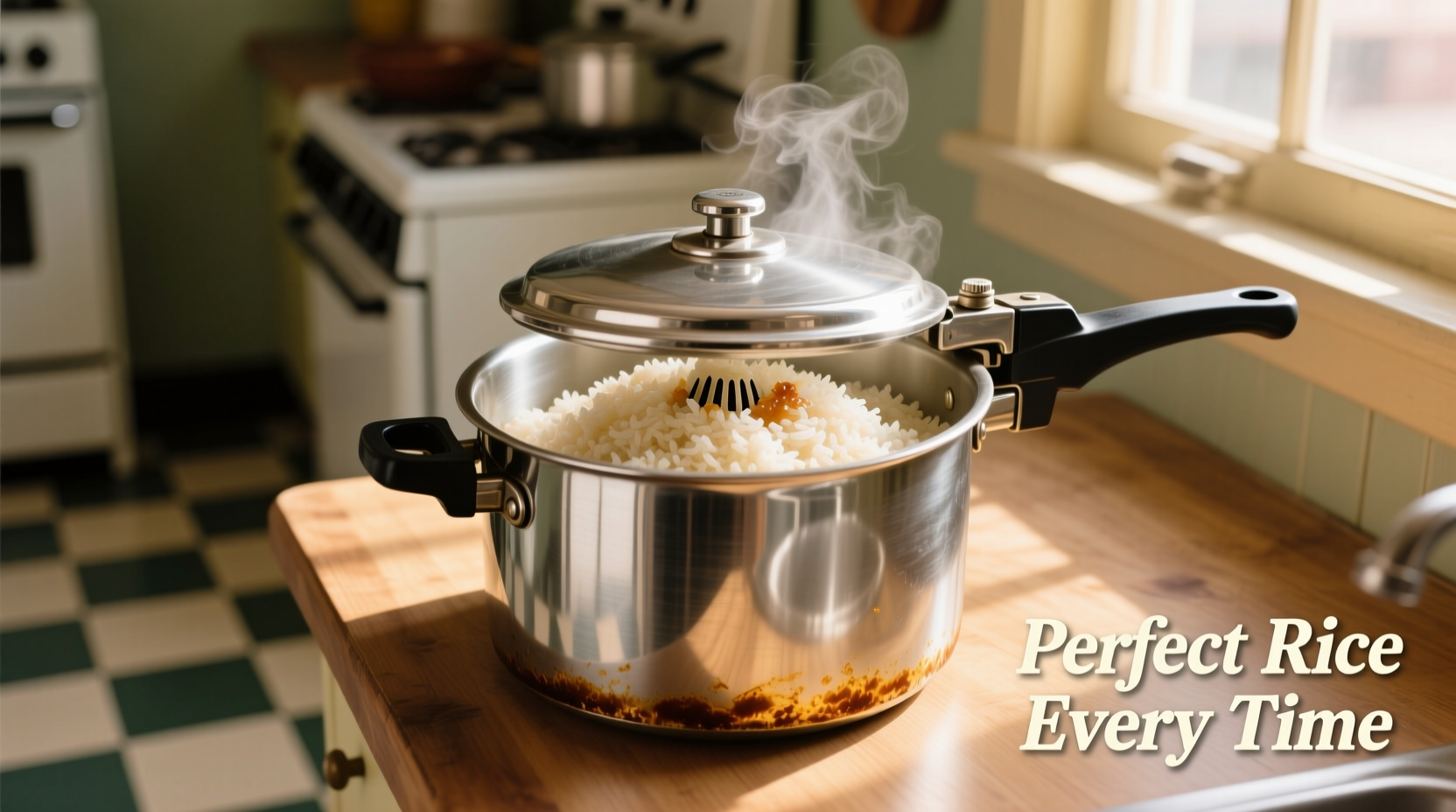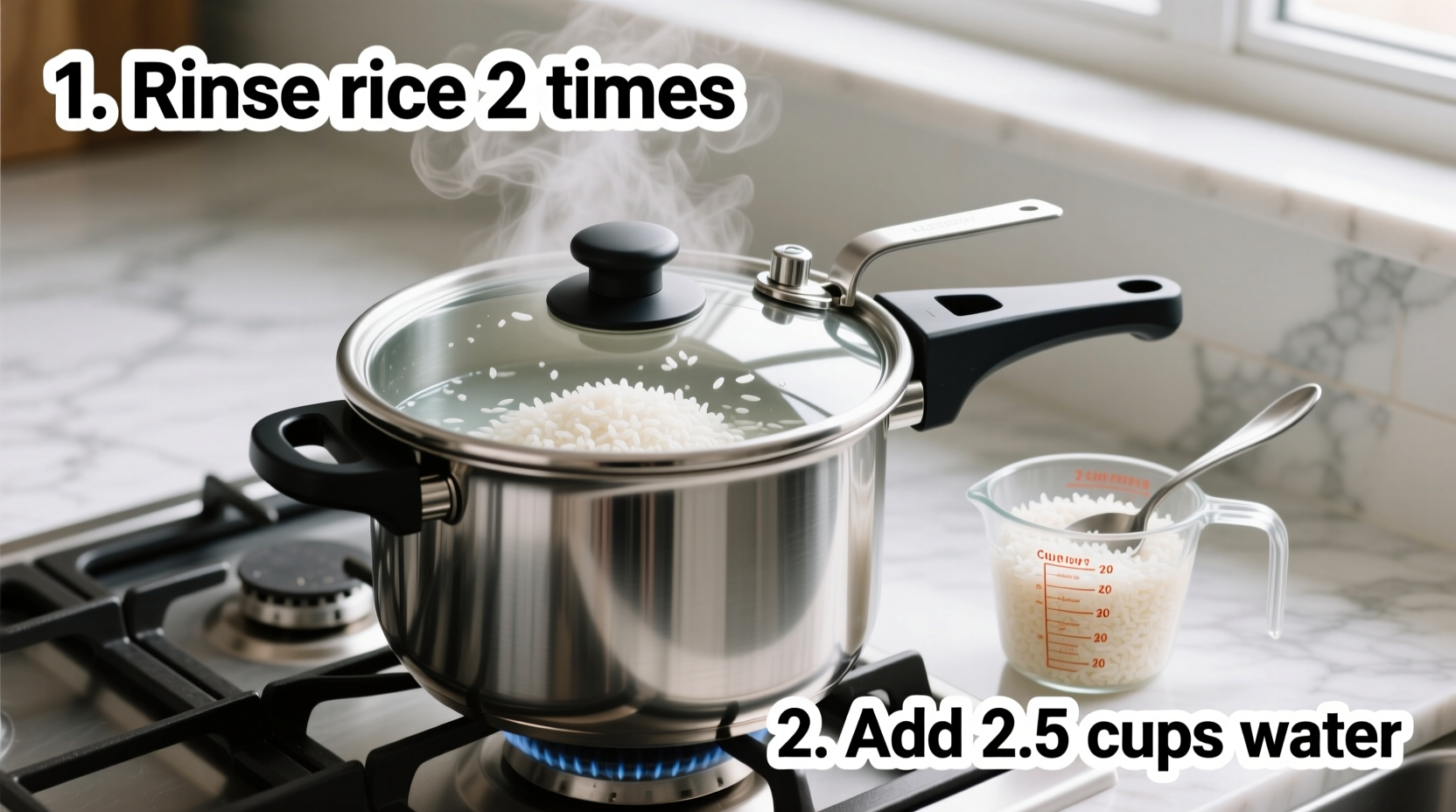Why Your Pressure Cooker Is the Secret to Perfect Rice
Forget sticky pots and inconsistent results. Modern pressure cookers deliver restaurant-quality rice in half the time of traditional methods. The sealed environment creates precise steam pressure that cooks grains evenly while locking in natural starches. Professional chefs like those at the Culinary Institute of America have adopted pressure cooking for rice preparation due to its remarkable consistency and energy efficiency.
Essential Preparation: Setting Up for Success
Before you begin, proper preparation separates good rice from great rice. Start with these critical steps:
- Rinse thoroughly - Wash rice 2-3 times until water runs clear to remove excess starch
- Measure precisely - Use the same cup for both rice and water measurements
- Soak when needed - Basmati and jasmine benefit from 20-30 minute soaking
- Check your cooker - Ensure sealing ring is properly seated and valve functions correctly

Step-by-Step Cooking Process for Flawless Results
Follow this professional method for perfect rice every time:
- Combine rinsed rice and measured water in the inner pot
- Add 1–2 teaspoons oil or butter to prevent foaming (optional but recommended)
- Close lid securely, ensuring pressure valve is set to "Sealing"
- Select "Manual" or "Pressure Cook" mode at high pressure
- Set cooking time based on rice type (see chart below)
- Allow natural pressure release for 10 minutes before quick release
- Carefully open lid away from you to avoid steam
- Fluff gently with rice paddle before serving
| Rice Type | Water Ratio | Cooking Time | Natural Release |
|---|---|---|---|
| White rice (short/medium) | 1:1¼ | 3 minutes | 10 minutes |
| Basmati/Jasmine | 1:1½ | 4 minutes | 15 minutes |
| Brown rice | 1:1¾ | 22 minutes | 15 minutes |
| Wild rice blend | 1:2 | 25 minutes | 15 minutes |
Pressure Cooking Timeline: From Invention to Kitchen Staple
The evolution of pressure cooking for rice preparation demonstrates why modern methods work so effectively:
- 1679 - Denis Papin invents the first pressure cooker ("Digester")
- 1945 - Post-WWII aluminum pressure cookers become household items
- 1970s - Japanese manufacturers introduce first electric rice cookers
- 2010 - Instant Pot popularizes multi-cooker pressure cooking
- 2020s - Smart pressure cookers with precise temperature control
According to the USDA's Food Safety and Inspection Service, modern electric pressure cookers maintain more consistent temperatures than stovetop models, reducing the risk of undercooked rice which can harbor harmful bacteria.
Troubleshooting Common Pressure Cooker Rice Problems
Even with precise methods, issues can arise. Here's how to fix them:
Burn Error Message
This common issue occurs when rice sticks to the bottom. Prevent it by:
- Ensuring adequate liquid (minimum 1¼ cups for 1 cup rice)
- Stirring after adding ingredients to prevent settling
- Using the "Sauté" function at medium heat only
- Adding 1 teaspoon oil to create a protective layer
Mushy or Overcooked Rice
When rice becomes too soft:
- Reduce cooking time by 1 minute increments
- Decrease water ratio slightly (try 1:1⅛ instead of 1:1¼)
- Ensure you're using natural release for the full recommended time
- Check your cooker's pressure level (some run hotter than others)
When Pressure Cooking Isn't Ideal for Rice
While pressure cookers excel at most rice preparation, certain situations call for alternative methods:
- Very small batches - Less than ¼ cup rice may not generate enough steam
- Sushi rice preparation - Traditional Japanese methods require precise water absorption monitoring
- Recipes requiring constant monitoring - Some pilafs need periodic liquid addition
- Older pressure cookers - Models without precise pressure control may yield inconsistent results
The FDA's food safety guidelines note that pressure cooking is generally safe for rice preparation, but caution against overfilling cookers beyond the ¾ mark to prevent clogging safety valves.
Professional Tips for Elevated Results
Take your pressure cooker rice to the next level with these chef-approved techniques:
- Add a pinch of salt to enhance flavor without making rice sticky
- Include a pandan leaf or lemon grass for aromatic rice varieties
- Toast rice in the pot with oil for 1-2 minutes before adding water for nuttier flavor
- Substitute part of the water with coconut milk for specialty dishes
- Let cooked rice rest 5 minutes after fluffing to achieve perfect texture
Safety First: Pressure Cooker Best Practices
Modern electric pressure cookers have multiple safety features, but proper handling remains essential:
- Never force open a pressurized cooker - wait for complete pressure release
- Keep hands and face away from steam vents during release
- Clean the sealing ring regularly to maintain proper function
- Replace sealing rings every 12-18 months for optimal performance
- Don't fill beyond the ¾ line to allow room for expansion











 浙公网安备
33010002000092号
浙公网安备
33010002000092号 浙B2-20120091-4
浙B2-20120091-4